In part, Elana Marte Adler appears to be on a quest to translate interpretations that can be personal and illusory into sonic and visual form. Working in a variety of conceptual strategies and new to long-standing mediums, Adler’s output holds a consistency, though at times fluid, that draws upon the duplicity of color, malleable infrastructures and exploring new media. This week the COMP Magazine trotted down to Back-of-the-Yards to discuss with Adler the creation of dimensionality via color, ideas and form, how the selection process and application of specific materials embed her practice in the present, her approach in her curatorial and studio efforts and the running of Adler & Floyd Gallery.
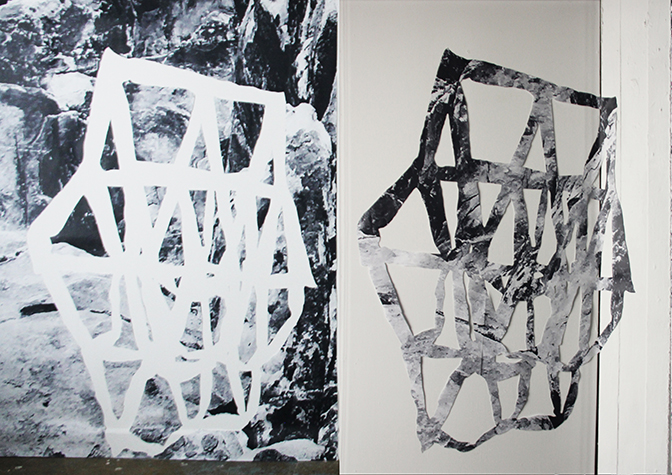
San Francisco, California, 2018
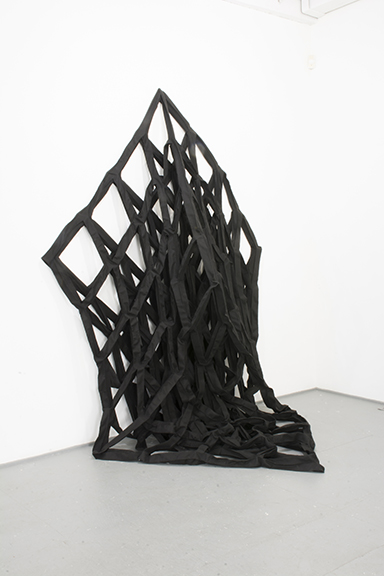
Chicago Artist Coalition, 2018
You were born in Ann Arbor, Michigan, but spent much of your early life out east. Let’s rewind a bit to the 1990s. I’m curious if there were any experiences or people who piqued your interest to pursue a career in the visual arts?
There was never one person who inspired me to pursue art. Art was the only thing that made me feel calm and that I would get lost in. I was a pretty hyper and energetic child and a total handful at times, art seemed to bring me to a calm zen place. I have always been more impatient with anything that involves other people, but by myself I can sit and focus for extremely long times.
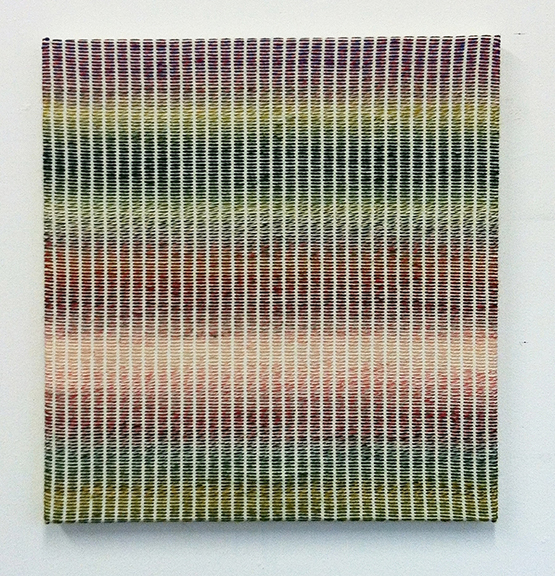
Can we talk about process? The textile works in the Uncertainty series utilizes recognisable forms (circles, rectangles) with alignment that is frequently based in symmetry. What was the intent with these works? Can you describe the tactile application?
All my work is rooted in some type of textile process or mentality. The Uncertainty series was a meditation of additive traveling through time and space using a single variegated line. The layers create dimensionality and confusion of plane, the simple shapes (circles and squares) acting as ‘windows’ that question foreground and background. The line of yarn in embroidered onto linen substrate.
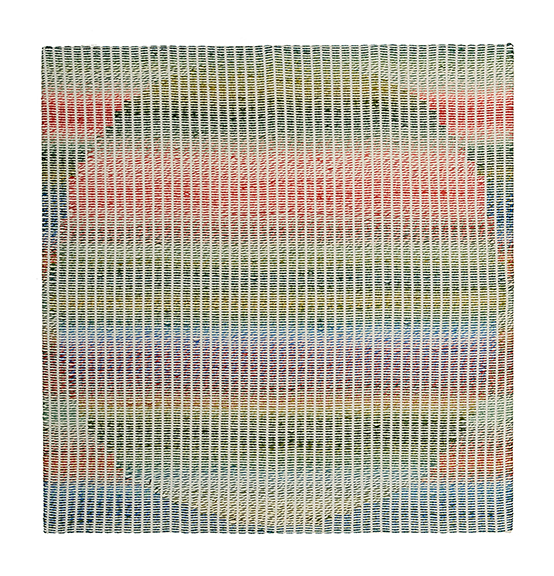
I’m curious about your thoughts on color? In some series there is a highly limited use, while in other series you offer more diversity. Nevertheless, in each there appears to be elements that indicate the selection of color is very deliberate.
My obsession with Amish and Mennonite quilts inspired my more patterned and color- blocked work. Thinking through discussions of artisan, artist, Art and C/craft.
I am interested in using the innate color of material unless I feel it needs to be changed. Exact Color of Doubt deals with one’s personal association of color to emotion and memory. I explore color as emotional transference and material as physical transference.
I am not necessarily interested in color as trickery, but material and subversion of expectation. Other, more monotone or grey scale works are about chaos and control- how much information do you need to understand a system, networks and space amongst texture. In these works I feel like more color would distract from my goal.
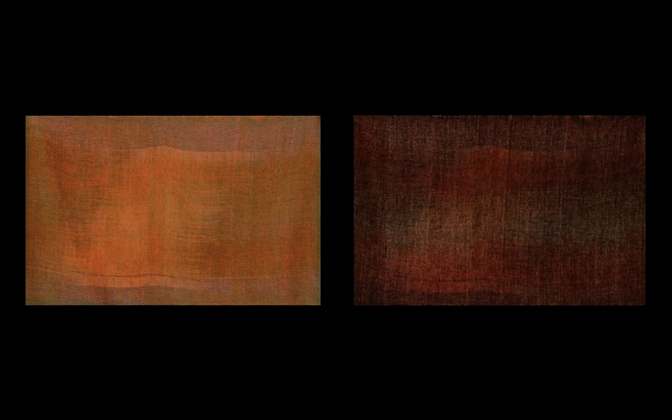
video still (Double Ikat handwoven fabric, LED lightboxes, LED lights, and video.),
Chicago, Illinois, 2016
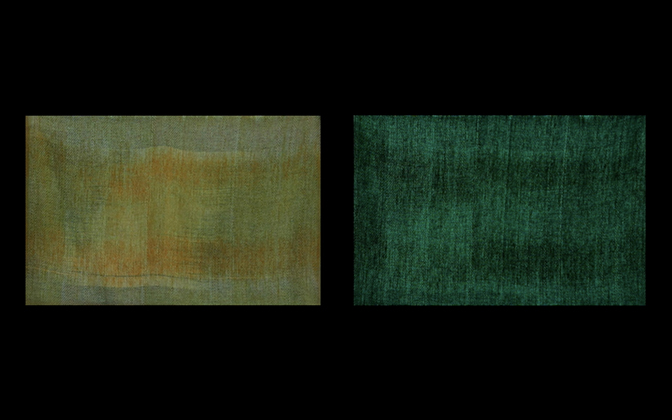
video still (Double Ikat handwoven fabric, LED lightboxes, LED lights, and video.),
Chicago, Illinois, 2016
Much of your more recent works investigate sculptural strategies. In Tangible Negotiations, Schematics and others, you work with recognizable forms (cubes) that are not rigid like that found in Minimalists approaches of the 1970s. Also, there is some deviation to selection and application in materials. Can you share with us your conceptual and tactile approach?
I have been utilizing the grid or cube much in the past 3 or 4 years. It started as an entryway, a common visual language, to get across ideas of mapping and collapse inspired by Paul Virilio’s text Open Sky. Much of my work is iterative, a kernel of an idea that sprouts and takes shape but there are aspects that are congruent. I am interested in pushing expectations of material and structure.
As Rosalind Krauss wrote, “logically speaking, the grid extends in all directions, to infinity.” While expanding the grid, I try to challenges expectations of material potential.
In Tangible Negotiations, open rubber cubes perform, contradict, and reimagine power structures, adapting the grid that early modernist architects and artists envisioned to restructure built and social space. While their gridded-ness depicts structural integrity, their translucence nods to weakness, revealing intrinsic floppiness. The cubes generate order in their placement, while the material properties of rubber subvert their rigidity and undermine authority.
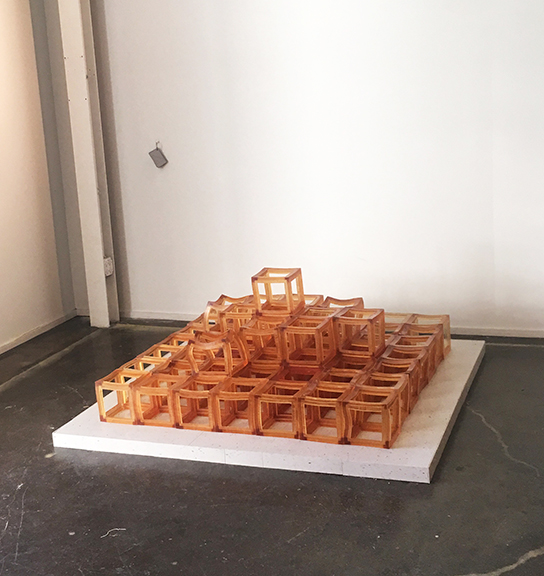
Chicago Artist Coalition, 2019
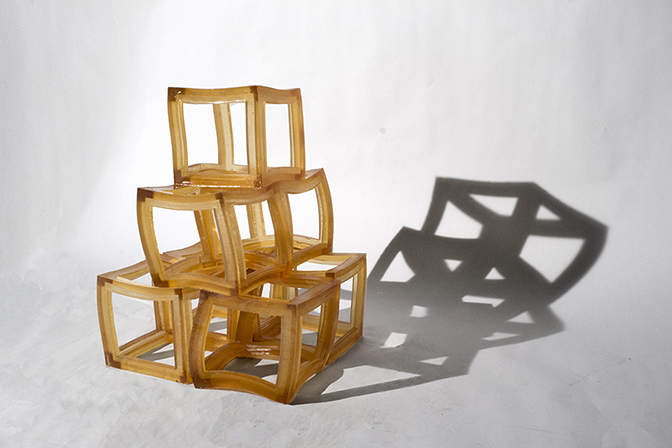
Chicago Artist Coalition, 2019
One of the other areas discussed was your interest in producing a fully encompassing environment during presentation/experience. In Colors Have a Strange Duplicity… you are working with sonic elements that encompass an entire space. What prompted this investigation? What did you hope to achieve?
Colors Have a Strange Duplicity… explores the sonic mapping of space, through overlap, placement, and frequency. Throughout the space, the beats overlap, the tempo of one rising to the foreground or falling to the background depending on ones positioning.The sound is both a cacophonous jumble, and rhythmic breath, examining examines chaos and pattern. I was trying to be less reliant on the physical grid to exemplify mapping, I read some article about bats and was considering sonar as a way of networking through space. It was a great challenge for me to create a sound work and solder all the circuitry. I always get a bit self conscious utilizing skills that I have way less experience in but love learning new ways to create.
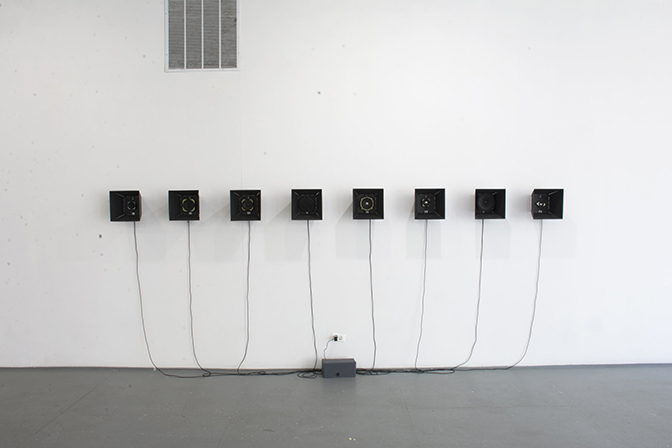
Chicago Artist Coalition, 2018
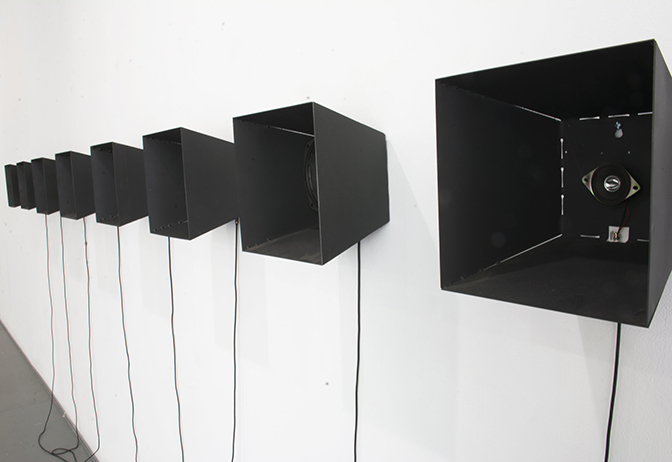
Chicago Artist Coalition, 2018
In addition to working as a studio artist, you run Adler & Floyd gallery with Danny Floyd down in McKinley Park. Can you offer some insight on your curatorial efforts and focus? What do you find challenging and/or rewarding in this project?
Adler & Floyd has been a fun collaborative project with Danny. It is an opportunity for us to share experiences and give back to a community that we are a part of. Adler & Floyd is a place where artists can be as experimental without pressures of a white cube gallery space. It has been reaching out to people whose work we admire and invite them to show with us. It is easy to go to school in a city and to just show your friends. For a while we were focused on the participating artists not being Chicago based, as a way of sharing some new work with the community.
The most challenging things is really sitting down and planning the show dates in advance, to put things on the calendar, because when working multiple jobs and Danny and I both being artists ourselves, it is really easy for time to accidentally slip away.
We love having the shows and it great to meet new people who find out about the events through The Visualist or social media, as well as getting our friends to come over for a beer and talk about art.

Do you have any specific projects currently underway? New material being tested? What’s coming up at the gallery? What’s the forecast for 2020?
I’ve been in a transitional studio period for the last 6 months, focusing on input for a while and now ready to start processing and focusing more on output. Also, I’ve been doing the research and planning some new projects. I have started some collaborative projects that are generating great raw materials for some bigger things as well as my own artistic research in urban planning and fluxus/ minimalist composers and ideas of space.
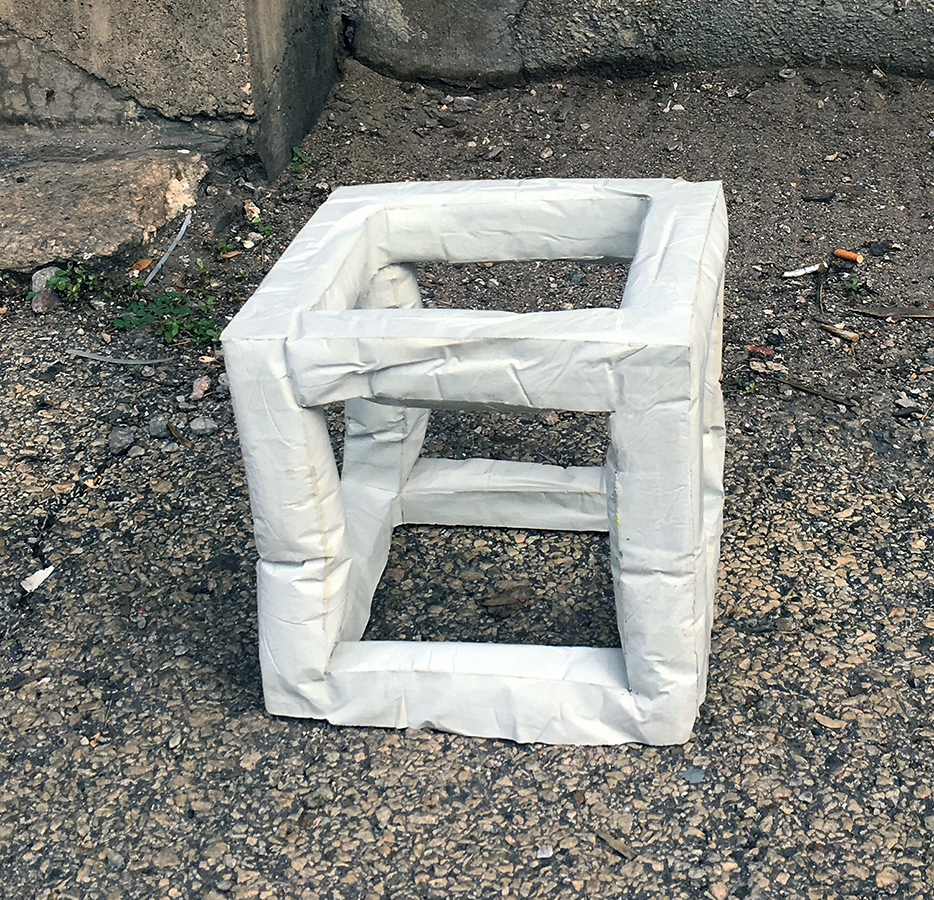
For additional information on the aesthetic and curatorial practice of Elana Marte Adler, please visit:
Elana Marte Adler – https://www.elanamarteadler.com
Adler & Floyd Gallery – https://www.adlerandfloyd.com
Aspect Ration – http://www.aspectratioprojects.com/gold
Compound Yellow – https://compoundyellow.com/new-events/2018/8/11/12-openingspart-4-michael-borowskielana-marte-adler-opening-reception-6-9pm
Compound Yellow – https://compoundyellow.com/new-events/2018/8/11/12-openingspart-4-michael-borowskielana-marte-adler-opening-reception-6-9pm
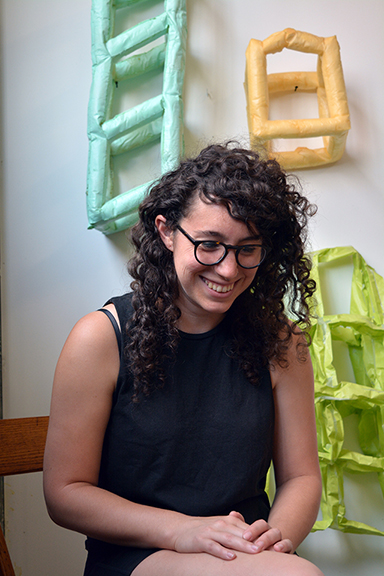
Artist interview and portrait by Chester Alamo-Costello


